It was in Count Volpi’s garage the whole time…for at least the last 51 years.
by Wallace Wyss –
Please indulge me, dear reader, in a bit of reminiscing. Occasionally I’ll see a picture of a car that sticks in my memory. I am, I must confess, admittedly much more interested in the cars of the Sixties – a period when I was discovering sports cars – than the cars of today.
One picture that stuck in my mind from around 1966 is that of the Serenissima Torpedo P538 Spyder. I must have seen the original in Motorsport.
The mid-engine car struck me as similar to the Ferrari 250P but with a bit more styling flare. I remember thinking it was a bit cheeky at the time, an Italian automaker going up against Ferrari.
All the Serenissimas were pretty much forgotten until a recent Concours Villa d’Este, when a coupe version of the same car, this one called the Jet Competitzione, rolls in with Swiss registration. Like the other Serenissimas, was commissioned by Count Giovanni Volpi for his Scuderia Serenissima racing team.
THE COUNT: A MAN WITH ONE MISSION IN LIFE: SHOW UP FERRARI
Count Giovanni di Misurta, then just 20 or so, was, to say it gently, very mercurial. He came from a wealthy family, very politically powerful in Venice. He had at one time had a scuderia that campaigned Ferrari GTOs. But then he ran afoul of Enzo and that’s what led him to start a new firm, with partners, called ATS. Their goal was to make a mid-engine V8-powered GT car (the 2500GT and 2500GTS) and then, after a tiff with his partners, he pulled out, only to buy the leftovers to make cars under the Serenissima name.
He is known to Ferrari enthusiasts for bankrolling the creation of the infamous Ferrari Breadvan, a Ferrari SWB Berlinetta designed to humble the 250GTO, Designing the Breadvan was no less a personage than Giotto Bizzarrini who had designed the GTO.
Bizzarrini left Ferrari in the famous “palace revolt” so when the Count and Enzo had a tiff and Enzo cancelled the Count’s order for two new Ferrari 250GTOs, Bizzarrini was willing to help design a Ferrari that would blow off the factory GTOs.
So Serenissima planned to run F1 and in addition, to make some GT cars, but wanted to test the prototype GT cars out at the ultimate testing ground, the 24 Heures du Mans. There was a coupe, which had wicked handling, then another coupe which was called the Jet and which appeared at April 1966 practice at the Sarthe. But in the race itself in June it was a Spyder version that entered the race.
The designer of the Spyder was Francesco Salomone. A previous car connected to him was the Lancia B 24 Cabriolet. He was in a group of stylists that did that design.
More important Autoclassics.com identifies him as the designer of the Ferrari 275GTB, a truly landmark design (though another report says an obscure metal worker named Gian Carlo Guerra designed it, by laying out the wire framework that the body should follow, and Enzo went with that, having the wire sculpture bodied by Fantuzzi to follow the curves.)
So, even though Salomone’s contribution to other designs isn’t rock solid, I think his Spyder is one of the best proportioned mid-engine prototypes to come from Italy in the ‘60s.
The actual cars were built at Serenissima by a team headed up by ex-Fiat and Ferrari engineer Alberto Massimino, who had started with Jano over at Fiat and then followed Jano to Alfa. The bodywork, on a site called automobilismo.it, is credited to Carrozzeria Grand Sport as far as the coupe but Medardo Fantuzzi is credited with the bodywork of the Spyder.
Fantuzzi built many one-off cars, including the mid-engine 70P for Shelby and DeTomaso to a Pete Brock design. The Fantuzzi brothers had entered series production with the Maserati A6G. They were the go-to shop in Modena if you wanted to have a hand-built car bodied.
It’s rare a guy can build the chassis, the body and the engine but Massimino gets credit for the engine and chassis at least. This three liter V8 even had its own unique 5-speed transmission, one which was intended to be used by Automobili Serenissima in both road and racing cars. Involved in the fettling of all these efforts was Alf Francis, Stirling Moss’ racing mechanic.
In my recent research, I found Serenissima’s goal was to make ten open Spyders with a roll bar built into the body. Fantuzzi would do the bodywork (he also built the DeTomaso 70P prototype body).
The Spyder did better than the coupe at Le Mans. The coupe only made it to the April tests but didn’t appear for the race. The Spyder, with a 3.5 liter engine, did. Driven by Jean-Claude Sauer and Baron Jean de Mortemart, the car completed 40 laps before the transmission broke.
Before these cars disappeared off the map, who should come along wanting to use the engine but a New Zealand driver, Bruce McLaren, who saw the lightweight engine as his salvation. He put it in his 1966 M2B chassis. It ran just long enough to win McLaren his very first world championship point, but was too unreliable so McLaren switched to BRM for the next year’s racing season.
The Count’s scuderia went on to create other one-off racers, and suffice to say that they never had a chance against Ferrari, but you can say in retrospect that, in their brief history, there was a wonderful flowering of talent that showed you didn’t have to be Ferrari to be innovative.
THE COUNT OPENS THE GARAGE
I was a barn finder in the ’80s but never seriously looked for the Serenissima Spyder because I assumed it was cut up for parts. Then my interest was piqued again when recent coverage of the Villa d’Este concours showed the Jet coupe on display. A Swiss had found a similar engine and put it into a Serenissima chassis, SN 003, with a body originally designed “in period” (1965) by Bernard. The Jet Competitzione stunned the Italian car collecting world when it appeared at the 2006 Villa d’Este because it was in such great condition for a car that had been hidden for so many years. Amazingly the car was never even repainted!
And so, after seeing the original Spyder picture some 30-40 years ago, that lit the torch again for me to look for the Spyder, which I now know was chassis 005.
I did have another clue, a more recent picture showing the Spyder in a mechanic’s garage in Italy, jammed into a small space, with three other Serenissimas, one a grand prix car. So that was a clue it may have survived intact.
SURPRISE: THE SPYDER (AND TWO COUPES) RE-APPEAR
I have no excuse for not looking for it when I was traveling in Italy in the ’80s. I especially kick myself when I remember meeting a Lamborghini executive who I find out in 2019 worked for Serenissima. Maybe all I would have had to do was ask him where the Spyder was and he would have handed me a phone number. But it’s too late now.
In January 2019, I was writing a story about my long interest in the Spyder only to find that the Spyder not only survived but will be auctioned February 8, 2019 at Artcurial Retromobile in Paris. Also to be auctioned from the Count’s collection will be two other Serenissimas, the 1967 Serenissima Agena (also known as the GT Strada), which was originally designed as a Grand Tourer with a mid-engined layout using a nearly similar 3.5-liter V8 design and the 1968 Serenissima Ghia GT (also known as the Agena, basically a re-bodied Mangusta with a V8 engine using three valves per cylinder, as developed by A. Francis.
Retromobile in a press release said “the ex-Le Mans Fantuzzi Spyder is estimated to make a price between 1.3- and 1.8 million Euros, while the other two are judged to sell somewhere in between the 400- and 600,000 Euros mark.”
One wag on another website said the Spyder may set a record for the most money ever spent on a non-running car. With only 8-10 Serenissima engines made, there aren’t exactly spare parts,
So my search is over,…but hey, hope springs eternal, Artcurial, in their description of the car said: “it is the only survivor of two built.” Which could mean there’s still a twin out there somewhere….
The same auction house became internationally famous when they found the collection stored at an old farm in France that included many one-off cars including the California Spyder of Alain Delon.
Lesson learned? Target three or four cars rumored long missing and never stop looking for them. In criss-crossing Italy back in the 1980s, while researching books, I probably drove within a mile of where the remaining Serenissimas were housed but forgot they were on my “list.”
Wallace Wyss 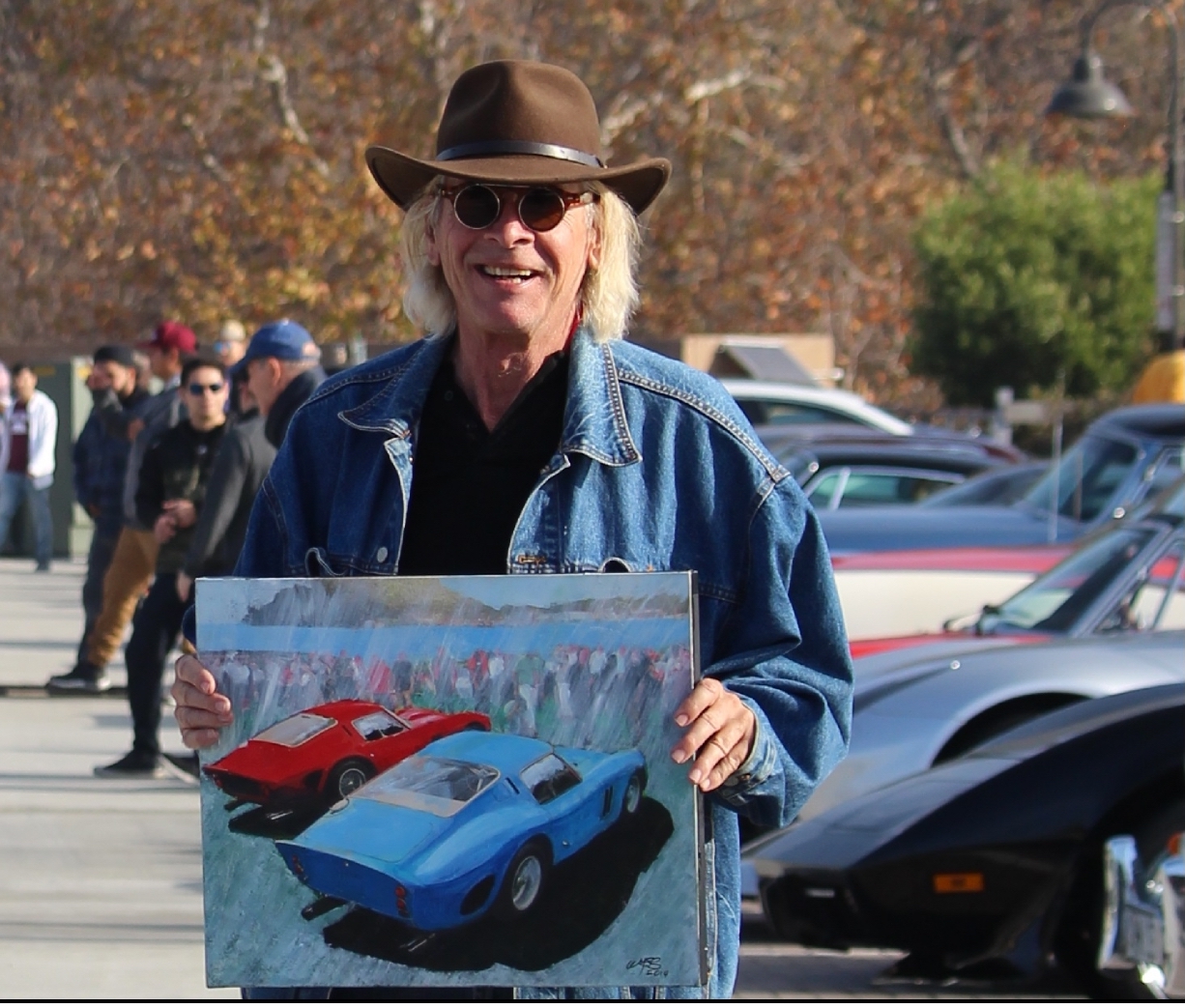
THE AUTHOR: Wallace Wyss, the author of 18 automotive histories, is currently wearing his fine art hat, painting portraits of exotic cars on commission such as the one shown here. He can be reached at mendoart7@gmail.com.
Photos ©Christian Martin compliments of Artcurial.
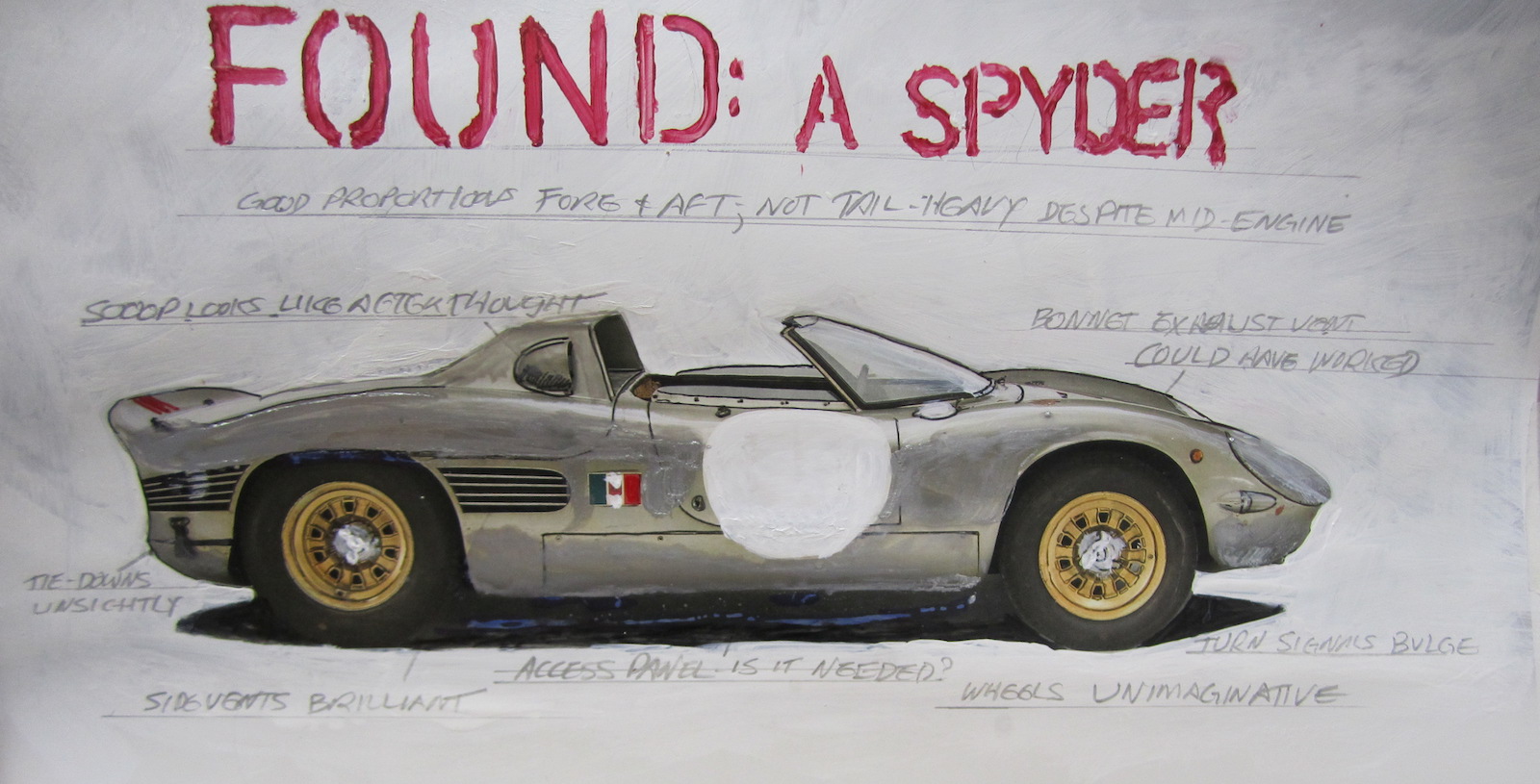
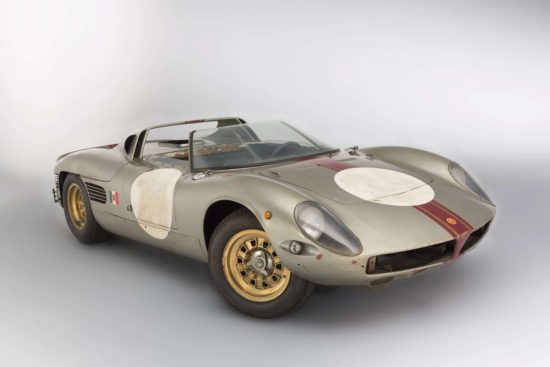
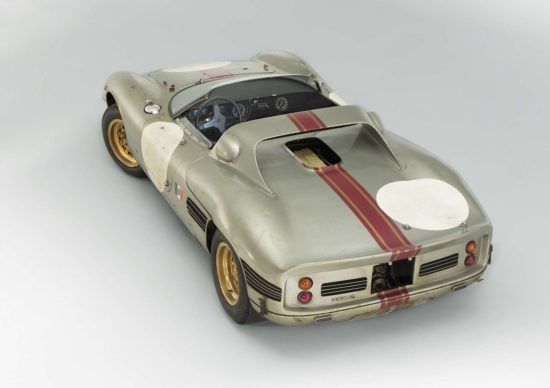
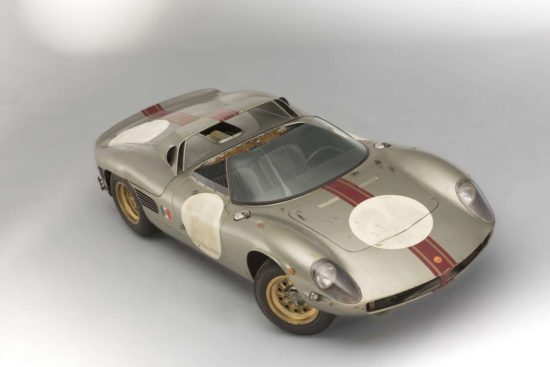
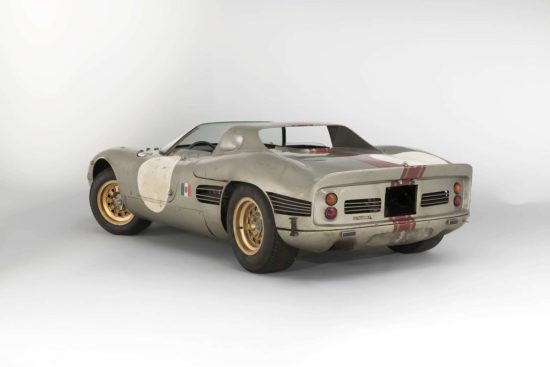
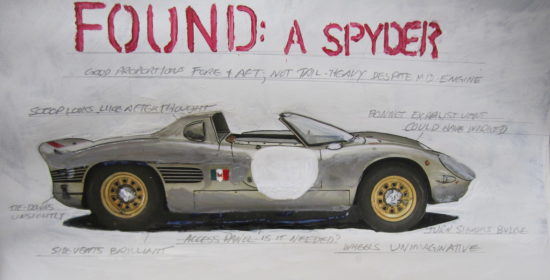
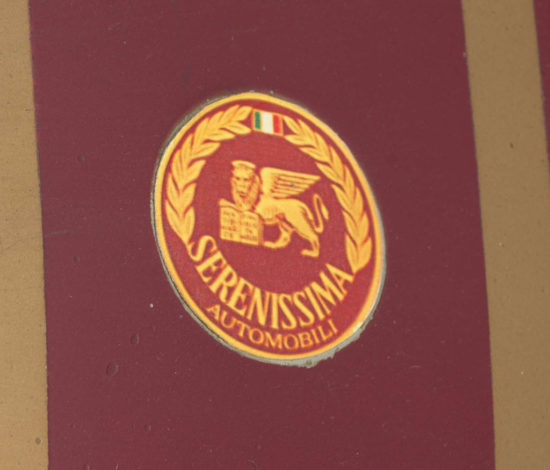
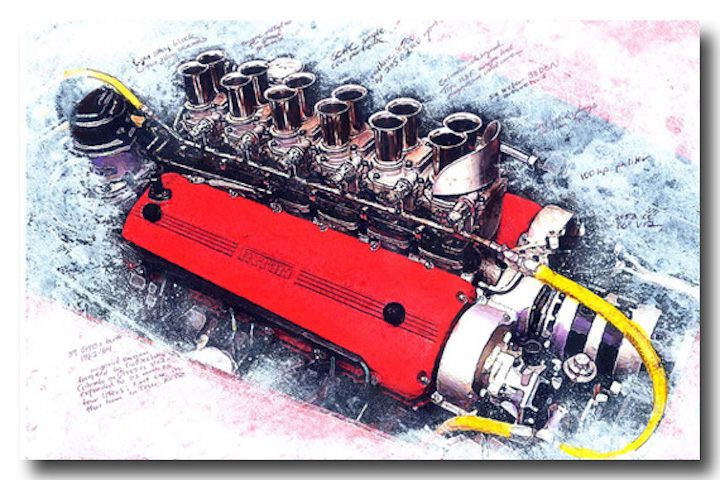

Great piece, I remember seeing pictures of the Serenissima’s over the years and each time also forgot about them… not so surprising really as they were sequestered almost immediately after their construction. But sure great to see them again, and the article just makes them all the more illusive and magical. Ah the stuff of dreams…
Great tale, Wally! I have had two ATS’s, and have spent time carousing with Alf Frances. I have also visited the ATS factory (after closure), but sadly never met the Count. Thanks for the memories.
Wallace, maybe you didn’t find it, but you educated us along the way, and that has been very enjoyable. I’ve been searching since the mid-’90s for a French micro-sports car that was displayed at the 1960 NYIAS. I’ve learned quite a bit about it and have met many interesting people in the process, but no leads on its whereabouts. However, I’m confident it is still in the New York metropolitan area, waiting to be discovered. The search continues!
You might try advertising in Craigslist for the area it was last seen in, offering a reward if the tip leads to purchase. Back in the early ’80s, I used to run pictures of raggedy Ferraris in Auto Trader and I would get some great cars but since the internet is now so pervasive people can check last known auction price. Still if it is a really obscure car, there may be no sales for them to decide what to sell it for. I say never give up, as I say I probably passed by this Spyder several times, every time I went to Modena….
UPDATE:
The sale was a big success. According to famed author Larry Edsall on ClassicCars.com:(his report edited here…)
“Record prices help boost sale 31 percent compared with 2018 figures
Artcurial Motorcars completed its three-day Retromobile auction in Paris on Sunday, reporting total sales of $47,804,169, a 31 percent boost compared with the 2018 sale. The Paris-based auction company noted that 10 vehicles sold for record prices.
1939 Alfa Romeo 8C 2900 B Touring Berlinetta sells for more than $18.9 million at Artcurial’s Paris auction
The overall sell-through rate was 76 percent, and Artcurial reported that 84 percent of vehicles sold went to buyers from outside of France. American collectors made four of the six most expensive purchases at the sale, including the top two vehicles, the 1939 Alfa Romeo 8C 2900 B Touring Berlinetta that sold for more than $18.9 million, the third-highest amount ever paid at auction for a pre-war vehicle, and the 1966 Serenissima Spyder that brought an auction-record price of more than $4.7 million.
The ’39 Alfa Romeo 8C 2900 had been owned by the same Dutch family for 43 years. The car had been purchased by the consignor’s father for less than $12,000.
Artcurial Motorcars reported that several collectors — both in the room and on the telephones — were competing for the car, which had a pre-sale estimated value of less than $2 million.
The auction also featured a quartet of pre-war cars discovered in a barn in Belgium. Among them, a 1937 Bugatti Type 57 Cabriolet by Graber brought $565,678, a 1932 Bugatti Type 49 Vanvooren sold for $222,300, a 1929 Bugatti Type 40 sold for $215,500, and a 1925 Citroen 5HP went for $24,300.
Top 10 sales, Artcurial Motorcars Retromobile Paris 2019
1939 Alfa Romeo 8C 2900 B Touring Berlinetta, $18,922,528
1966 Serenissima Spyder, $4,767,244
2009 Mercedes-Benz SLR Stirling Moss Edition, $2,957,436
1964 Ferrari 250 GT/L “Lusso,” $1,104,462
1930 Alfa Romeo 6C 1750 Gran Sport roadster Corsica, $1,104,462
1971 Porsche 916 prototype “Brutus,” $1,077,568
1936 Bugatti 57 Atlantic Erik Koux, $963,777
1937 Bugatti Type 57 Cabriolet by Graber, $565,678
1967 Ferrari 330 GTC, $606,132
1954 Mercedes-Benz 300 S cabriolet, $538,784
(Prices include buyer’s fee.)”